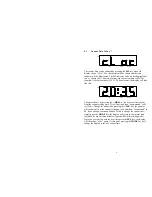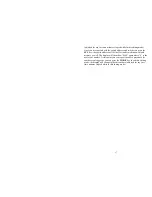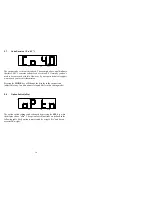
7
6.
If there is already another LNFC connected to the LocoNet then stop
here and refer to Section 6.1 on establishing the LocoNet
clock
master.
If this is the first/only LNFC then proceed to the next step.
7.
The LNFC and any fast clock-aware devices (e.g. DT100 throttles)
will be synchronized and will display the current time.
4.
Choosing a Fast Rate
There is no right or wrong fast rate value to use. It can vary from scale to
scale and user to user. If you actually want to operate your railroad "by the
clock", some points to keep in mind are:
•
the distance between stations or towns; the longer the distance, the
lower the fast rate can be.
•
switching time; it doesn't make sense to choose a high fast rate if your
switching crew is totally overwhelmed by the clock and they can't enjoy
their work!
•
train speeds; the faster you run your trains, the faster you'll need to run
the clock in order to make distances appear longer.
•
average operating session length; if you expect to complete an entire
day's work in a three hour operating session, then you'd better choose a
fast rate of around 8.
For a detailed discussion of fast clocks and their usage consult the book
How to Operate Your Model Railroad
by Bruce A. Chubb. You may
want to try operating your layout a few times with different fast rates to
assess which is most fitting. Typically, most modelers choose a fast rate
between 4 and 12. Although the LNFC supports fast rates up to 100 it is
hard to envision someone using one that high!








































